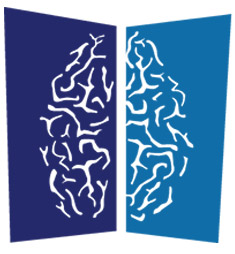Raising a child with hydrocephalus can be a scary adjustment. The build-up of brain cerebrospinal fluid (CSF) or shunt failure can quickly become life-threatening. There are symptoms to watch for, new terms to learn, and your child’s requirements constantly change as they grow and develop. It’s a condition that requires life-long management.
But after the initial shock and learning curve, many children with hydrocephalus and their families successfully manage happy lives. At ANA, we have helped many of our pediatric patients and their families navigate this journey. Below we share their stories, plus tips about raising a child with hydrocephalus.
Life Expectancy of Children with Hydrocephalus
If hydrocephalus is diagnosed and treated early, children can live a full lifespan. However, there are many factors that determine life expectancy and life quality in children with hydrocephalus. In some cases, hydrocephalus is already very advanced before or at birth. The earlier hydrocephalus is treated can reduce damage to the brain and prolong life expectancy.
In the video below, one of ANA’s patients Amanda Breem talks about her life with congenital hydrocephalus. She was diagnosed at 6 months old and underwent 15 neurosurgeries by the time she was 16 years old. Her childhood was challenging but now as an adult, she has a bright future and works towards achieving her life’s goals.
Hydrocephalus Symptoms and Characteristics in Children
The symptoms of hydrocephalus vary depending on the cause of hydrocephalus, although the increased pressure on the brain will present some common signs to watch for:
- Nausea or vomiting
- Personality or behavior changes, such as irritability, tiredness, and loss of interest
- Headaches
- Vision problems or downward pointing of the eyes
- Poor balance
- Loss of bladder control
- Noticeable veins on the scalp
- Abnormal head growth
Signs of Shunt Failure or Malfunction in Children
Hydrocephalus is treated with brain surgery, whether a shunt (a tube that directs excess fluid from the brain into the stomach) or an endoscopic third ventriculostomy (ETV, a surgical opening that allows brain fluid to flow normally). In children, an estimated 50% of shunts fail within the first two years, which can include blockages or obstructions, infections, or malfunction of the shunt.
If you notice any signs of shunt failure, you should contact your doctor for advice. Sometimes symptoms come on gradually, while other times it can be very quick. In situations with sudden symptoms, you should visit your doctor or an emergency ward immediately. Your child will likely need surgery within a matter of hours. For this reason, a close connection with your neurosurgeon and the medical team helps families navigate these tough times.
Signs of shunt failure in children looks like:
- Drowsiness or fatigue
- Confusion, or behavior or cognitive changes
- Extreme nausea or vomiting
- Light sensitivity and visual issues
- Intense headaches
Managing Your Child’s Life with a Shunt
The fear of shunt failure is a constant worry for parents raising children with hydrocephalus. A shunt malfunction means another surgery, possible brain damage, and many more medical visits. The possible financial strain and daily stress and responsibility can be overwhelming.
Mother Suzanne Donadio knows all too well about emergency surgeries and constant shunt malfunctions; her daughter has had some 30 surgeries, sometimes a surgery each week. She shares her story here and why having a compassionate connection with her neurosurgeon helped her get through. “We get up every day and we do the best we can to take care of not only her, but her two younger sisters,” she says.
Networks and community services can be a great help. Parents may also need their practitioner to help with case management, especially between specialists, schools, and other medical services. It’s important that you have a great medical team because hydrocephalus often requires a multiple-treatment strategy.
The Hydrocephalus Association is also a great resource for children and families navigating their way through this condition.
Caring for a Child with Hydrocephalus
It’s important that you feel comfortable with your doctor to ask any questions, and who can explain any potential complications. For example, visual issues are common and screenings should be regular. With certain medications, hearing and dental screening may also be required regularly. In these aspects, your practitioner can guide you towards the best way to care for your child with hydrocephalus.
Other common issues include:
- Magnets: Some shunts can be turned off by magnets, so make sure you know which shunt is used and whether you need to provide extra supervision around magnets.
- Hydration: as dehydration can cause fatigue and headaches, a child with hydrocephalus should stay properly hydrated throughout the day.
- Spatial distance and memory: some hydrocephalus patients have difficulty judging space, speed and distance, and may need assistance crossing the road or remembering where to go.
- Sports: some sports are not recommended if they could potentially affect a shunt, such as contact sports that involve grabbing around the neck or hanging upside down.
Teaching Children with Hydrocephalus
Going off to school is a big step for any parent, but parents raising a child with hydrocephalus will naturally have more concerns.
It is important that parents have an open line of communication with their child’s teachers and caregivers so they can:
- Explain how teachers can spot a seizure or shunt failure, and respond appropriately.
- Help implement any development or social skills programs recommended by your child’s doctor or neuropsychologist.
- Be open to arranging the classroom if required, for example, to fit a child’s walker or remove magnets if required.
Hydrocephalus, Intellectual Disability & Social Development
It’s normal for any parent to fret over their child’s future but this can be somewhat compounded when caring for a child with hydrocephalus, depending on their physical, intellectual, and social abilities. There may be speech delays or slower development than other children.
There are many success stories of children with hydrocephalus going on to study at universities and enter employment. However, while many maintain sufficient cognitive function to make it in the world, social integration may prove more challenging.
Having grown up with hydrocephalus, Amanda Breem says she felt different as a child. “It was so hard for me to fully engage in school as a kid and fully experience a full childhood of being able to play outside with my friends and not worry about any medical problems that I have to encounter,” she says. “Participating in class was very difficult, most of my time during school was spent in the nurse’s office. It was not uncommon for me to take exams and tests in the hospital.” But with modified class activities and tutors, Amanda got through school and was able to enter college.
Social skills that may be affected include:
- Not getting angry or giving up when faced with frustrations
- Polite social cues, such as listening in a conversation, waiting, or politely refusing requests
- Following rules or directions
Of course, many of these concerns relate to children in general and are skills that can be taught. One difference is that many children automatically learn social skills, whereas children with hydrocephalus may take longer as they don’t easily interpret verbal and non-verbal cues to automatically acquire these skills.
The lack of understanding of these cues, however, can impact their social interactions. For example, by misjudging spatial cues, a child with hydrocephalus may stand too close or too far from a person, which can cause other children to feel uncomfortable and avoid further social interaction. Another common miscommunication is voice tone, making it harder to understand sarcasm or jokes, which can lead to embarrassing experiences.
While children may eventually catch up with these social skills, neuropsychologists recommend intervention at an early stage. Even if the social skills naturally come later in life, a child with hydrocephalus may already become withdrawn and avoid social interaction from having too bad social experiences.
Typically, parents can work with schools and neuropsychologists to identify which social areas need development and create a plan to help their child manage these deficient social skills.
Schools are mandated to provide certain testing, although an expert analysis is typically more precise. Some insurance plans will cover the cost (which ranges from a few hundred to a few thousand dollars), although check your policy. Some doctors will write a prescription for such testing, considering that hydrocephalus children can be at risk of social development delays.
While intervention does not guarantee success, it is one way parents can help their children attempt to reach a higher quality of life as they grow.
Emotional Aspects of Hydrocephalus as a Child
There is also an emotional toll for children with hydrocephalus. ANA patient Amanda Breem says it was challenging having hydrocephalus as a child. “Growing up, it was always difficult for me to open up and let people know what I was undergoing during my personal life and the countless surgeries I’ve gone under,” she says. “It contributed to a lot of feelings of feeling isolated and alienation, and really took a toll on my mental health, contributing to anxiety and depression…
She found motivation in friendships with others who had been through life-threatening situations. “Meeting a friend that experienced the same sense of helplessness and weakness at such as young age, through such a troublesome situation, it really motivated me and Carly to engage in empowering other people.” Amanda and her group of friends went on to share their stories through public speaking at different universities. “… it’s ok to have a diagnosis and it’s ok to be different and to be your own shade of grey,” she says.
Informing Your Child, Friends & Teachers About Hydrocephalus
Many people have never heard of this condition, so information can be a powerful tool. Share information on your child’s condition with anyone who cares for them, including family, friends, and teachers.
Some parents create information sheets on how to identify a shunt malfunction and who to contact in an emergency. This will also give you some peace of mind in letting your child have a more normal upbringing and not be sidelined from hanging out with other children.
It’s also vital that your child understands their condition early on, too, and to be aware that some of their limitations are related to the condition, not them as a person.
Below teenager, Giana DiLascio talks about when she discovered she had hydrocephalus, a condition she nor her mother had ever heard of, and the experience of surgery.
Her advice is to stay positive and strong. “Only focus on the positive and forget about the negative because you can’t look at this with a bad light, you have to see what good can come out of this… You have to rely on your family and friends, they going to help you get through it,” she says.

ANA is a team of expert neurosurgeons and medical professionals, who combine their decades of knowledge to provide information, events, and articles on a range of neurological conditions.



